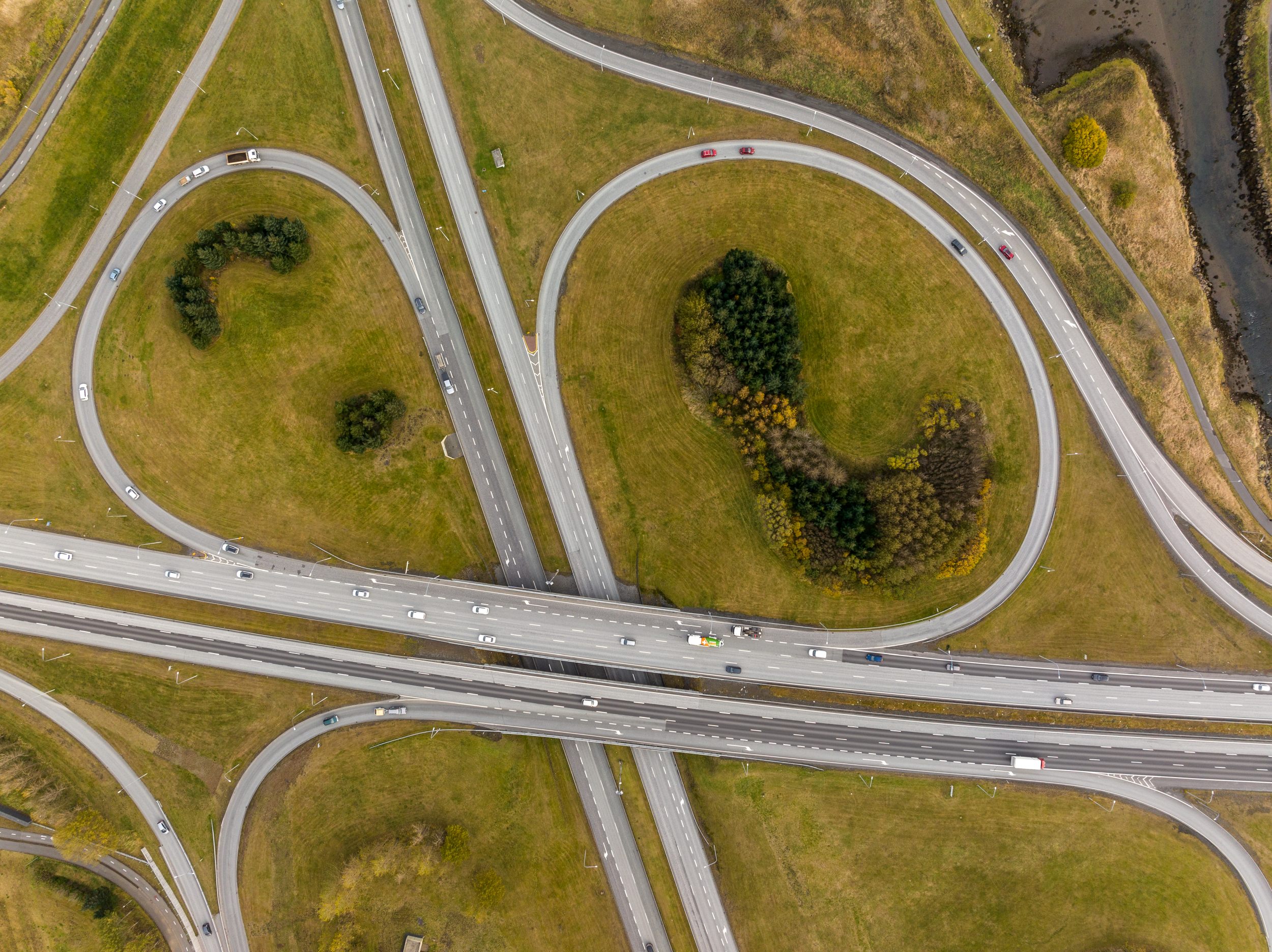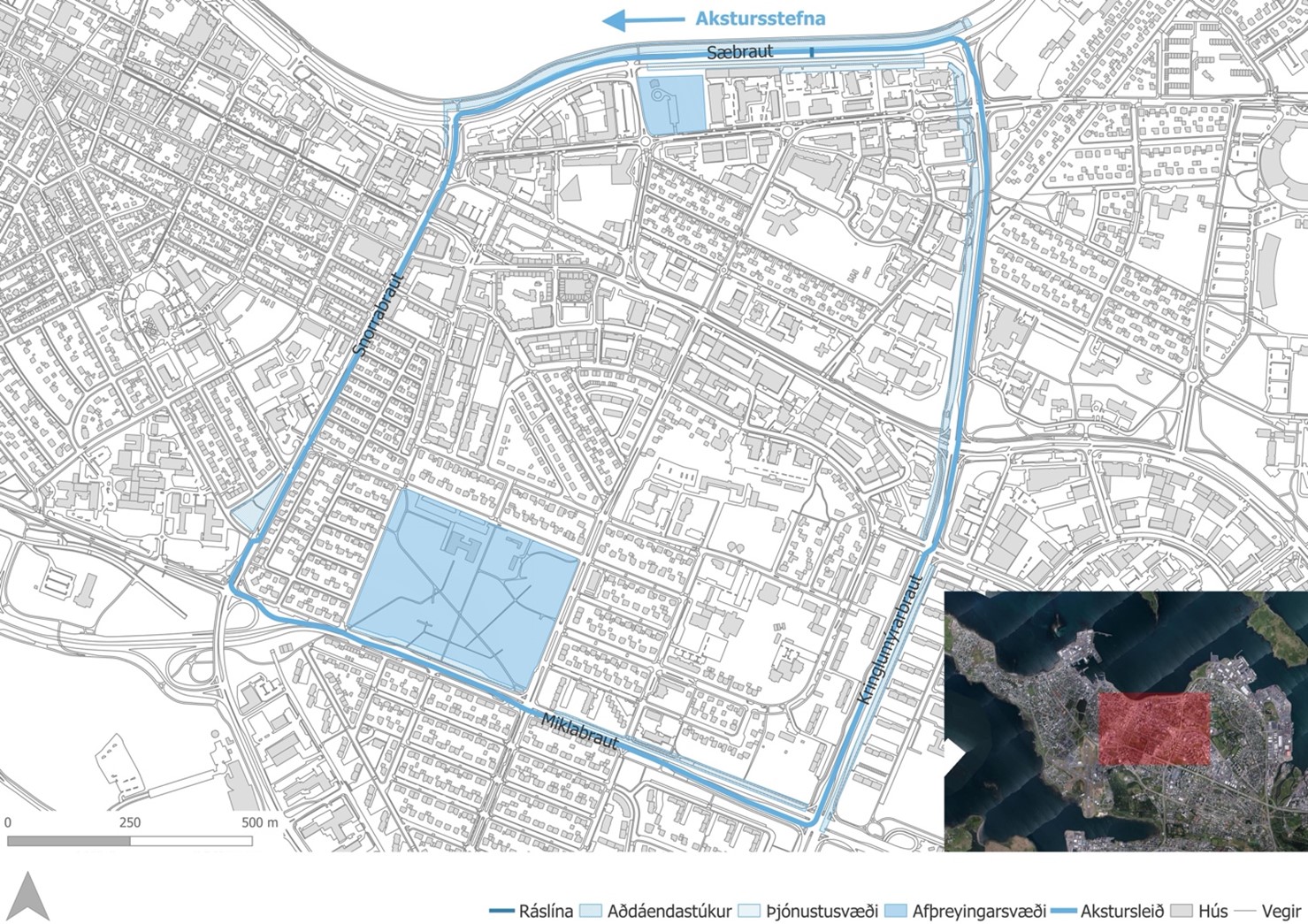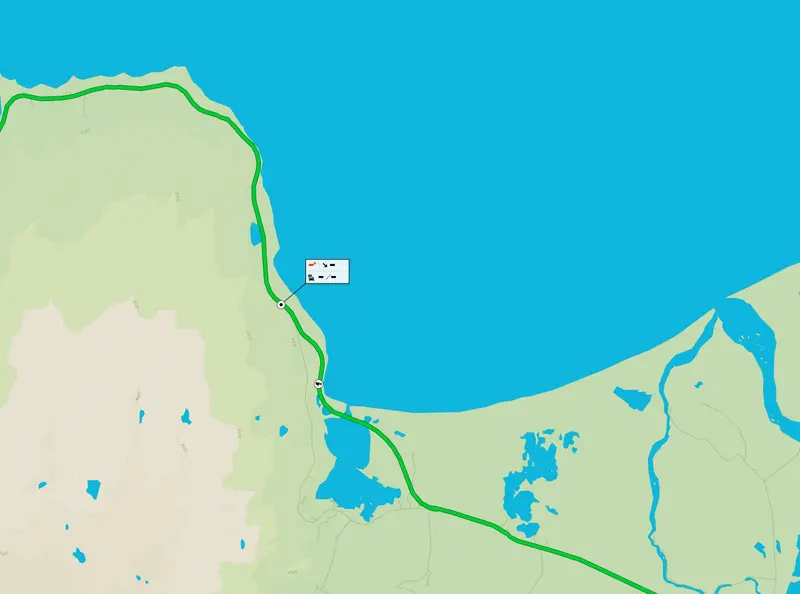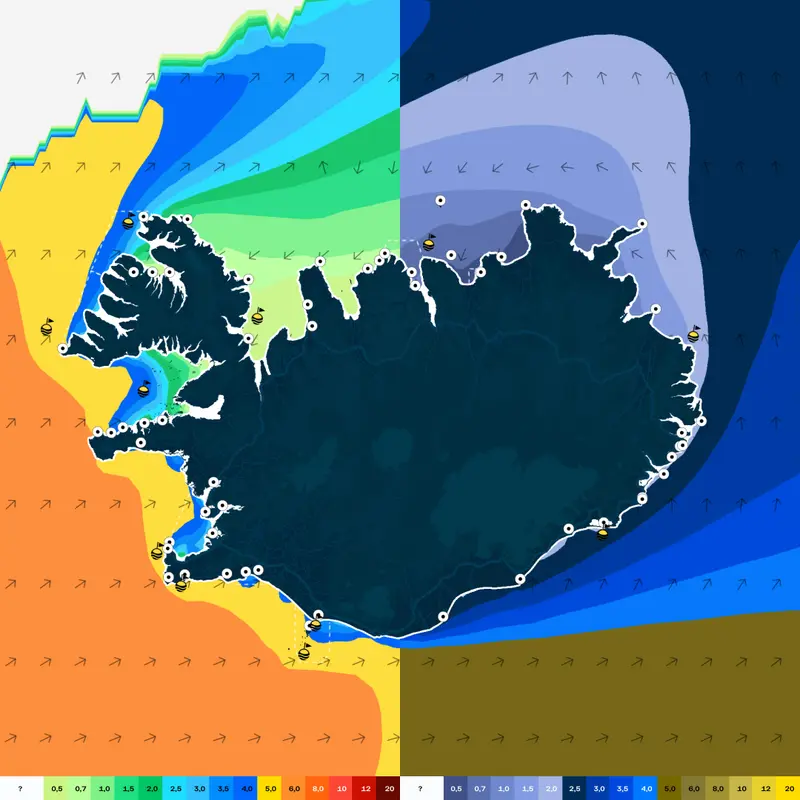3 nóvember 2025A street circuit in the city?
A street circuit in the city?
A master’s thesis in urban planning examines whether it is possible to set up a street circuit for international racing events in the capital area.

Sæbrautarstokkur – frá Vesturlandsvegi fram yfir gatnamót Sæbrautar og Kleppsmýrarvegar/Skeiðarvogar
Every year, cities such as Monaco, Baku and São Paulo transform their streets into temporary race circuits for international competitions like Formula 1 and Formula E.
Events of this kind attract hundreds of thousands of spectators, both on site and through television broadcasts.
Such races require extensive construction work and adaptations to the cities’ road networks.
This topic was the focus of a master’s thesis by Hugrún Harpa Björnsdóttir in urban planning at the Agricultural University of Iceland, supported by a grant from the Icelandic Road and Coastal Administration’s Research Fund.
Purpose of the study
The aim of the thesis was to explore whether — and where — it might be possible to establish a street circuit within the existing road network of the capital region, what opportunities such a project could create, and what challenges it would entail.
Special emphasis was placed on the standards of the Fédération Internationale de l’Automobile (FIA) for race circuits and how these relate to planning and infrastructure development within Iceland’s road system.
International standards as a foundation
The FIA’s standards cover a wide range of aspects, including the minimum width and length of tracks, straight sections, placement of broadcasting equipment and safety barriers.
The Icelandic Road and Coastal Administration’s road design guidelines were used in relation to guardrail design, and a cross-section was prepared to illustrate the minimum road width according to both FIA standards and Icelandic road design requirements.
Three options identified
The cross-section was used as a basis for selecting three potential locations for further analysis.
The study also examined potential impacts on the surrounding community, including tourism, traffic flow, street closures, noise levels and other planning-related factors.
The options examined
The routes along Sæbraut and Kringlumýrarbraut were considered suitable due to their proximity to essential services and their potential to serve as a showcase for the City of Reykjavík, given their location near major landmarks.
The starting grid was proposed on Sæbraut, which would require widening of the road to meet FIA width requirements.
This could also provide an opportunity to improve public transport by adding a dedicated transit lane.
Other roads would likewise need to be widened — in some cases at the expense of central medians — and temporary barriers would be required to separate traffic directions outside event periods.
Such modifications would necessitate the closure of key traffic arteries connecting the eastern and western parts of the city across Snorrabraut, which would have negative consequences, including for emergency vehicle access.
For these reasons, the Vesturlandsvegur–Suðurlandsvegur option was considered the most suitable of the three.
The area is currently characterized by industrial activity, with main traffic routes, car dealerships and transport companies nearby.
However, residential development has been expanding closer to the site, with new housing in Grafarholt and Úlfarsárdalur, as well as planned developments near Keldur.
This could create opportunities to transform the area through a mix of housing, services and potentially even a permanent racing circuit.
Impact on transport and opportunities for development
Temporary closures of Vesturlandsvegur and Suðurlandsvegur would affect the daily lives of residents, as these are key transport arteries connecting the capital region with western and southern Iceland.
However, the project could also present opportunities to improve evacuation routes and transport infrastructure — for instance, through the development of Hafravatnsleið and by accelerating the construction of Sundabraut.
Which competition would be suitable?
Formula E may be more suitable for Iceland than Formula 1, as the circuits are generally shorter and the required service infrastructure less extensive.
The spectator numbers for Formula 1 events often far exceed Iceland’s total population, whereas attendance figures for Formula E are much more manageable in the Icelandic context.
As Formula E features only fully electric vehicles, such an event could also provide an opportunity to promote Iceland’s clean, renewable energy.
Conclusion
The study does not take a position on whether such a project should be carried out, but it demonstrates that, from an urban planning perspective, it would be feasible.
Further analysis would be required regarding cost-effectiveness, engineering considerations and potential economic and environmental impacts.
The project illustrates how the existing road network of the capital region could be utilized in new ways, and how road construction, urban planning and sporting events can be combined into one exciting vision for the future.
Hugrún’s master’s thesis is available on Skemman.
This article was first published in Framkvæmdafréttir, Issue 3, 2025.

Sæbraut – Snorrabraut – Miklabraut – Kringlumýrarbraut

Sæbraut – Katrínartún – Laugavegur – Kringlumýrarbraut

Vesturlandsvegur – Suðurlandsvegur








